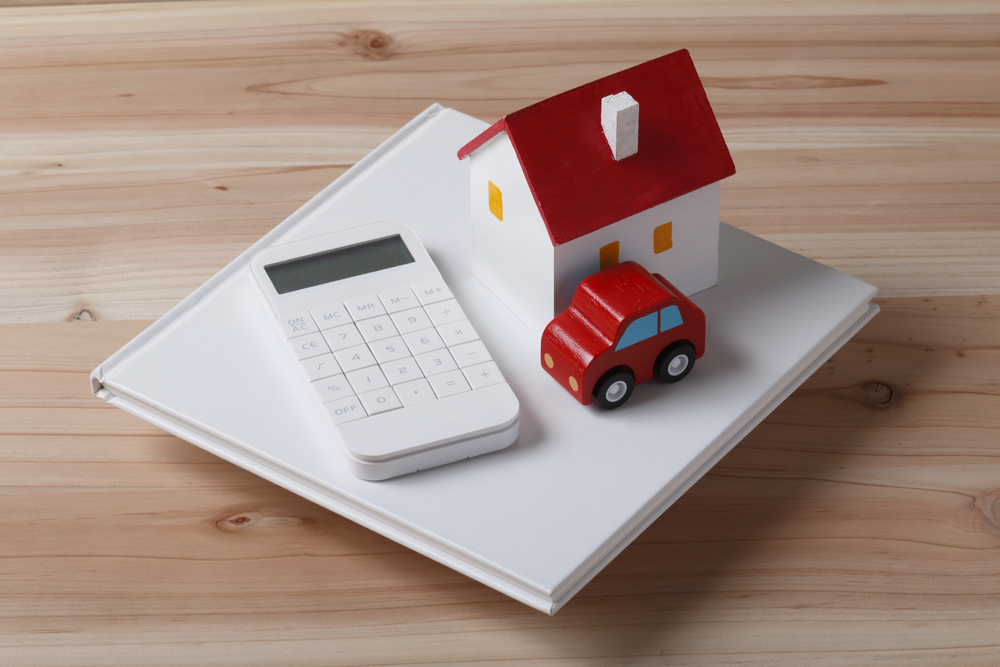4 ways to boost borrowing power when buying your first home

With Australian house prices at record highs, saving up for your first home can be stressful and challenging, to say the least. And when you do finally have enough for your deposit, it makes sense that you’d want to increase your borrowing power so you can get as much value as possible.
In this post, we take a look at what borrowing power is, how banks work it out, and what you can do to increase the total amount that a bank will lend you for your first home.
What is borrowing power and how do lenders calculate it?

Borrowing power refers to the amount that banks are willing to lend you to buy a home. This depends on a number of factors, including (but not limited to):
- Your income
- The price of the property you’re looking to purchase
- Your existing debts
- Your living expenses
- Number of dependents
If you want to get an estimate of your current borrowing power, Rateseeker’s borrowing power calculator is a good place to start. However, depending on the cost of the property you’re looking to purchase, you may wish to spend a little more to get the home of your dreams.
Here’s the good news: your borrowing power isn’t set in stone. Before you fill out a mortgage application, there are a few actions you can take to increase the amount you can borrow.
How can I increase my borrowing power?
1. Adjust your living costs

Lenders pay close attention to your monthly living expenses, from the cost of your utilities and insurance to household costs like your grocery bill, takeout food, and discretionary spending. When it comes to living expenses, lenders will generally use the higher end of the declared living expenses by the borrower or rely on the Household Expense Measure (HEM), which is a benchmark that is used to estimate people’s annual living expenses. This means that even if your living declared expenses are below the HEM benchmark, the lender will typically use the HEM rate.
If your expenses are higher than the HEM rate and you want to increase your borrowing power, cutting down on your living costs is a great way to start.
Consider things like:
- Adjusting the amount of money you spend on food deliveries
- Auditing your monthly subscription services
- Checking to see if there’s a better deal for your insurance, phone or utilities
- Finding ways to decrease transportation costs, whether it’s switching to public transport or carpooling
- Cutting back on discretionary spending, such as eating out, clothes shopping, or other forms of entertainment
When you show your lender that you’re capable of spending wisely, they’ll be much more likely to entrust you to borrow a larger sum of money.
2. Cut down on debt

The amount of debt you have can play a major role in how much a lender is willing to lend you. Lenders want to see that you are able to manage all of your existing financial obligations and that you’ll be able to continue doing so with the added requirement of servicing your home loan.
It doesn’t matter if it’s a personal loan, car finance, or unpaid credit card bills — the less debt you have, the better. Try to pay off as many of these debts as possible so you’re starting off your new home loan with a clean slate.
Tip: lenders look at your total credit limit, not just your outstanding credit card balance. Decreasing your credit card limit, or ditching the card altogether, is another helpful way to increase your total borrowing power.
3. Increase your loan term

Most borrowers will look at buying a property on a 25- or 30-year loan term. However, if you want to borrow more, you can always look to increase the lifespan of your loan.
Let’s say you’re planning to borrow $600,000 over 25 years at 2.31% p.a, which would equate to $2,634.65 per month in mortgage repayments. If you increase your remaining term to 30 years, you’d only need to pay $2,311.88 per month — which in turn means your lender may be more comfortable with lending you more. However, keep in mind that spreading out your mortgage repayments over a longer length of time means you’ll end up paying thousands (or even tens of thousands) more in interest over the life of your loan.
Want to work out your monthly repayments based on different loan terms? Try out our loan repayment calculator.
4. Work with a broker

A broker is a great asset to have when you’re applying for a home loan. Whether you’re looking to increase your borrowing power or improve your chances of securing the home of your dreams, a mortgage broker can advise you on the best path forward based on your financial situation — as well as secure you the sharpest home loan product on the market.
Looking to increase your borrowing power?
Our expert brokers are ready to assist. With access to over 30+ lenders and decades of experience in the property market, you’re in good hands with the Rateseeker team. Get in touch with us for personalised help today.
** General Advice Warning
The information provided on this website is general in nature only and it does not take into account your personal needs or circumstances into consideration. Before acting on any advice, you should consider whether the information is appropriate to your needs and where appropriate, seek professional advice in relation to legal, financial, taxation, mortgage or other advice.




